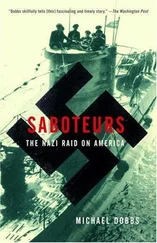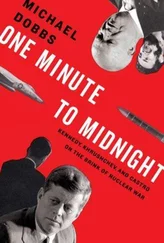In Casey’s view, intelligence could not be neutral. Intelligence without action was pointless. The war had to be taken into the enemy camp. He needed to find a place, he told associates, “to start rolling back the Communist empire.” 134In March 1985, Casey got what he wanted—a presidential directive to push the Soviet army out of Afghanistan. Prior to 1985, the American strategy had been simply to bleed the Soviets. The new objective was to help mujahedin win the war. From mid-1985 onwards, the CIA began pouring weapons into Afghanistan, via the guerrilla training camps in Pakistan. 135
A shambling bear of a man, with the look of an absentminded professor, Casey inspired strong opinions. To his detractors, he was an irresponsible ideologue, so blinded by his hatred for the Soviets that he was unable to view the world objectively. Secretary of State George Shultz complained repeatedly that the CIA was feeding him false information about the Soviet Union, vastly overrating its military and economic capabilities. He blamed Casey for a series of intelligence disasters beginning with the Iran-contra affair. 136To his admirers, Casey was the unsung hero of the final phase of the Cold War, the backstage mastermind who devised a strategy for bringing a Communist superpower to its knees. His methods for rolling back communism may have been crude, but they were effective. By the time he resigned as CIA director in January 1987, the “evil empire” was in clear retreat.
Whatever one thought of Casey, one had to be impressed by his energy and single-mindedness. Sick with cancer and in his early seventies, he was still crisscrossing the globe in his specially equipped black C-141 Starlifter aircraft to tend to his cherished anti-Soviet coalition. In order to save time and avoid unnecessary stopovers, the plane often was refueled in midair by a KC-10 tanker. The CIA director traveled at night to avoid attention, and checked into hotels under assumed names such as Smith and Black, in cloak-and-dagger tradition. A typical trip included stops in Tokyo, Beijing, Islamabad, Riyadh, Jerusalem, Ankara, and Rome. He discussed strategy with the Chinese, finances with the Saudis, and logistics with the Paks. Pakistani intelligence officials were soon referring to him as “the wanderer” or “the cyclone.” 137
On one such trip, in October 1984, Casey was taken by helicopter to visit the secret mujahedin training camps in Pakistan near the Afghan border. After watching the rebels learning how to make bombs with CIA-supplied explosives, he startled his Pakistani hosts by suggesting ways in which the war could be extended to the Soviet Union itself. Stage one of the plan involved the smuggling of subversive literature across the Afghan-Soviet border, to be followed by weapons to encourage local uprisings. A few months later the CIA shipped ten thousand Uzbek-language versions of the Koran to Pakistan for distribution in Soviet Central Asia. 138
Back in Washington, meanwhile, a bureaucratic war was under way within the administration over the supply of Stingers to the mujahedin. The Joint Chiefs of Staff did not want to hand their wonder weapon over to a bunch of illiterate Afghans. The CIA bureaucracy was concerned that the Stinger could be easily traced back to the United States, a violation of the most basic principle of covert warfare, plausible deniability. The main advocates of the deployment of the Stinger were conservative members of Congress and a few well-placed bureaucrats, such as Morton Abramowitz, chief of intelligence at the State Department, who feared that the Soviets might overwhelm the Afghan resistance. In interagency discussions Abramowitz argued that it was important to bring home to the new Soviet leadership the costs of remaining in Afghanistan. As long as Gorbachev could blame the war on his predecessors, he could be persuaded to get out. The United States should not allow “Brezhnev’s war” to become “Gorbachev’s war.” 139
The president authorized the transfer of four hundred Stingers to the mujahedin in February 1986, but more than six months elapsed before they showed up in Afghanistan. As was often the case in Washington, the presidential decision triggered more bureaucratic infighting over how it would be implemented. The army succeeded in delaying deployment for weeks by insisting that the entire stockpile of Stingers was needed by U.S. troops in Germany. It then demanded that security in mujahedin training camps in Pakistan be upgraded to American standards. 140By the time these objections were sorted out, a series of press leaks had alerted the Soviets that the missiles were on their way.
In an attempt to second-guess the internal Kremlin debate about Afghanistan, U.S. policy makers staged mock Politburo sessions in the Pentagon basement. 141Officials took turns playing Soviet leaders, arguing among themselves about how to respond to the latest challenge to their authority. The hawks argued in favor of a further escalation of the war and armed incursions into Pakistan to destroy the guerrilla training camps. The doves insisted that one Afghanistan was enough, and it was time to pull Soviet troops out. Intelligence reports from a well-placed agent in Moscow, suggesting that the Soviet military was extremely nervous about Gorbachev, supplied a touch of authenticity to these mock debates. 142
In fact, nobody in Washington really knew what was happening behind the Kremlin’s thick brick walls.
THE KREMLIN
November 13, 1986
THE GENERAL SECRETARY WAS in a combative mood. At his second meeting with Reagan, in Reykjavik, he and the president talked about bargaining away their entire nuclear arsenals. Had it not been for Reagan’s obsession with “Star Wars,” which torpedoed the agreement at the last moment, they might have changed the course of world history. Gorbachev had returned home frustrated and disappointed by the setback, but with a grudging respect for the “human qualities” of his American partner. It seemed to him that Reagan was genuinely interested in promoting peace. 143He was more determined than ever to tackle the vast range of issues that were impeding progress in superpower relations.
At the top of Gorbachev’s agenda was Afghanistan.
“We have been waging war in Afghanistan for six years now. If we don’t change our approach, we’ll be there for another twenty or thirty years,” Gorbachev told his Politburo colleagues, gathered in the Kremlin for their regular Thursday meeting. “We must end this process in the swiftest possible time.” 144
Like a chessplayer moving his pieces into position before an offensive, Gorbachev had prepared carefully for this moment. He had been raising the subject of Afghanistan at Politburo sessions within a few months after his appointment as gensek , suggesting that the time had come “to leave.” 145He came to the meetings armed with letters from ordinary Soviet citizens and war veterans and read them out loud to his colleagues. “We cannot explain to the soldiers what is going on,” a political officer had written. “Why do we have to kill civilians, destroy villages, burn down settlements? What are we fighting for?” 146
After “educating” his Politburo colleagues, Gorbachev had got to work on the Afghan leadership. In May 1986 he summoned Babrak Karmal to Moscow and told him bluntly that the time had come to quit. 147He then sent emissaries to Kabul to persuade the new Afghan leader, Mohammad Najibullah, to embrace a policy of “national reconciliation.” The issue now was not whether Soviet troops should be pulled out of Afghanistan but how and when and what kind of country they would leave behind.
Out of the half dozen men who had made the decision to invade Afghanistan, the only one still alive and still in power was Andrei Gromyko, now Soviet president. Gorbachev was amused by the speed with which the former foreign minister had “restructured” himself during the first two years of perestroika. 148Perhaps that explained his astonishing longevity. By the fall of 1986 the chief apologist for the invasion had become a leading advocate of withdrawal.
Читать дальше












